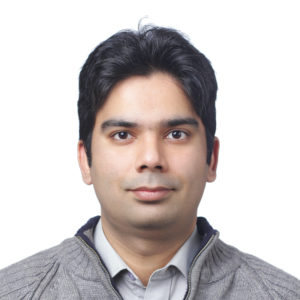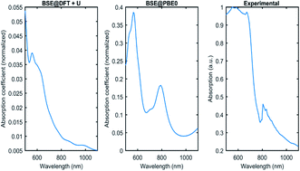We are very pleased to introduce Dr Ali Rauf, the corresponding author of the RSC Advances article Theoretical investigation of the optoelectronic response of highly correlated Cu3P photocatalyst. This paper became one of the newest additions to our Popular Advances collection. The Popular Advances collection is a selection of well-received RSC Advances articles, handpicked by our reviewers and handling editors.
Ali told us more about the work that went into this article and what he hopes to achieve in the future. If you would like to explore more of our Popular Advances, please find the full online collection here.
Meet the Author:
Ali Rauf presently works as Assistant Professor in the Department of Chemistry and Chemical Engineering, School of Science and Engineering, LUMS. Ali completed his Ph.D. in Chemical Engineering from Sungkyunkwan University, South Korea in 2018, and is now the PI of the Energy Materials groups at LUMS who specialize in materials design for energy environmental applications. During the initial years of Ali’s career, he has been more focused on experimental aspects of material design but over the period of time, he has realized the importance of theoretical study that actually compliments experimental results. Ali and his group have started studying various semiconductors using various DFT based approximations to find a theoretical explanation of experimental results. Ali and his group are very excited about this overlap between theoretical knowledge and experimentation, and will be employing DFT for the theoretical screening of suitable semiconductor materials for catalytic applications before the experimentation phase in any upcoming projects.
Could you briefly explain the focus of your article to the non-specialist (in one or two sentences only) and why it is of current interest?
The study focuses on finding the electronic and optical properties of a Cu3P semiconductor computationally using theoretical methods like Density Functional Theory (DFT). Moreover, advanced methods like the Bethe-Salpeter equation (BSE) were also used to find the optical properties comprising excitonic effects.
How big an impact could your results potentially have?
Although Cu3P has found applications in visible light photocatalysis, theoretically, its optoelectronic response had not been extensively studied. We employed advanced theories (BSE and BSE@hyhrid functional) to understand the underlying electronic structure. These properties are vital to understanding Cu3P better and fine-tuning it for green energy applications.
Could you explain the motivation behind this study?
The aim was to perform the theoretical study on Cu3P and compare the data with the experimentally obtained absorption data. We wanted to go beyond Independent Particle Approximation (IPA) and consider electron-hole interaction via BSE for the studied semiconductor. The BSE was solved not only after DFT + U, but also on top of hybrid functional (BSE@hybrid) to see the effect of the starting point in our optical results.
In your opinion, what are the key design considerations for your study.
The first thing was to select the material to probe. After the literature survey, we learned what was missing and determined our computational demand. We needed to apply several approximations in our study requiring various levels of computational resources, so the HPC cluster was used from the very start.
Which part of the work towards this paper proved to be most challenging?
1: Computational cost: When performing hybrid functional calculations, we faced memory issues. Similarly, BSE can quickly lead to such issues if we increase the convergence parameters in the BSE kernel.
2: Moreover, in selecting the Hubbard potentials (U term in DFT + U), we tried to find these parameters from the first-principle methods. However, the current theory in the QE code was not sufficient for the full-shell d-electron systems (like Cu). Therefore, we had to go back to the empirical approach in DFT + U, where we arbitrarily picked “U” values for our system.
What aspect of your work are you most excited about at the moment?
In theory, we have seen such power to turn on/off interactions by applying approximations, when BSE (excitonic interactions turned on) performs much better than IPA (Independent Particle – without excitons). So, to get close to experimental absorption, excitonic physics is important in semiconductors (apart from low-dimensional systems).
What is the next step? What work is planned?
We plan to form the heterostructure model of Cu3P with other suitable semiconductor photocatalysts to fine-tune the properties of the overall system or introducing the impurity to obtain something similar.
Theoretical investigation of the optoelectronic response of highly correlated Cu3P photocatalyst
Haseeb Ahmad, Ali Rauf and Shoaib Muhammad
RSC Adv., 2022, 12, 20721-20726
Submit to RSC Advances today! Check out our author guidelines for information on our article types or find out more about the advantages of publishing in a Royal Society of Chemistry journal.
Keep up to date with our latest Popular Advances, Reviews, Collections & more by following us on Twitter. You can also keep informed by signing up to our E-Alerts.












